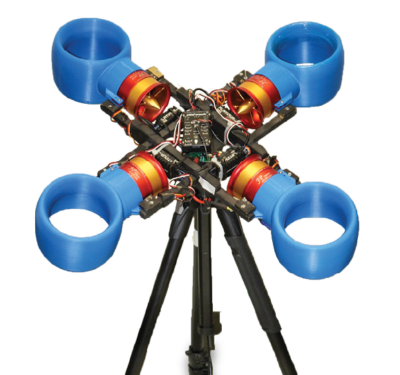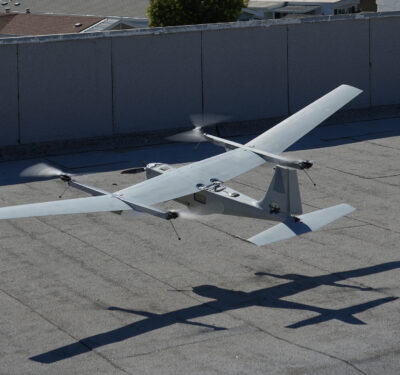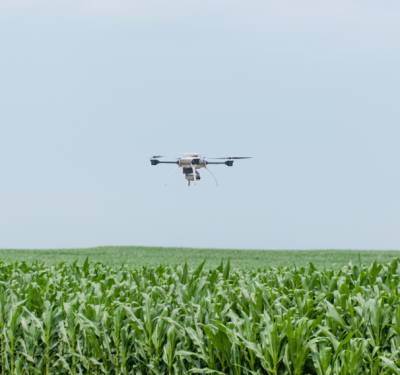
The European space community is embracing its role as an enabler of unmanned technologies. “Satellite communication is becoming indispensible infrastructure, along with 5G and microwave communication, for connected, cooperative and autonomous driving,” EU Commissioner for Transport Violeta Bulc said. She called on the European space community, especially satellite manufacturers and operators, to work together with car makers and other stakeholders. “We don’t want you to compete,” she said, “we want you to work together, to find solutions like the ones that are emerging right now from hybrid communications and that give us more opportunity to create safe and secure autonomous driving solutions.”
Galileo, the European global navigation satellite system (GNSS), Bulc said, is a key enabler of new drone services and solutions that could soon be available even in densely populated environments. “It is my intention to launch a full drone service market next year, in the last quarter of 2019. We are talking about the urban navigation space, about flying cars and drones to be fully included in an overall urban mobility scheme.”
Already in 2016 the European Commission had enunciated its ‘U-Space’ concept, what it describes as: “an efficient framework for all individuals and businesses to operate drones at lower levels, up to 150m high.” The U-Space will also allow for denser automated drone traffic over longer distances, including over cities, thus opening the door to a potentially huge drone service market.
Bulc was joined by Commission Vice-President for the Energy Union, Maroš Šefčovič, who also argued for space as an empowerer of technical advancement on Earth. “We need it for everything, for policy choices, to make sure that we make the right policy decisions, but also in very concrete areas, for example how to make our future automated and connected cars safe for our roads.”
Autonomous technologies were on the lips of several other presenters during the two-day Brussels event, and hearing high-level European political types talking about drones and driverless cars in a large public forum would have been encouraging to the unmanned systems community. And then one might wonder whether some of these policy-makers weren’t just repeating buzzwords.
In another conference session, MEP and big-time politician Christian Ehler cracked wise about politicians sometimes understanding the complexities of highly technical space systems, or not.
While politicians may or may not understand all of the ‘hardware’ issues at play, it is certain the technical and business communities remain perplexed at the political issues at play, for example in getting a European drone regulation in place. The proposed EU RPAS (drone) regulation, which the Commission worked diligently to put together in partnership with air safety authorities, has now languished for years, lost in an opaque negotiating process somewhere within the halls of the EU Council and Parliament. At this rate, the regulation is sure to be at least partly obsolete by the time it finally sees the light of day.
Beyond Earthly Obstacles
One question that concerns us is what will be the role of drones and other unmanned systems as humans look outwards, into space and into the future.
Bulc started her presentation by citing her compatriot Herman Potočnik Noordung’s 1929 book, ‘The Problem of Space Travel’, in which he addressed, among other things, the long-term human habitation of space. “There is only one thing he described in the book that we haven’t achieved yet,” Bulc said. “’The self-realization of humanity will only be completed by the transfer of earth’s culture to other space bodies’,” citing Potočnik. “Maybe this is our opportunity to populate other planets,” she concluded.
For his part, ESA Director General Jan Woerner told us he does not want to see humans colonizing other celestial bodies, at least not yet. “I’m not that person asking for settlements on the moon or Mars, meaning that people would stay there for life and raise families, etc., I am not,” he said. “Because I believe that to live in a tin can is not what humans should do with their lives.”
On the other hand, sending humans to the moon or to Mars and then returning them to Earth, he said, will certainly become a more commonplace occurrence.
When Woerner first described his concept of a ‘Moon Village’ some years ago, commentators raised their eyebrows, some even referring to the idea as ‘silly’. But the Moon Village is no longer a laughing matter.
Woerner has described the project, though he insists it is not a project, as being open to any and all interested parties and nations. There are no rules as to the form of their participation: autonomous robotic and astronaut activities are equally regarded. It will likely include not only scientific and technological activities, but also activities based on exploiting resources or even tourism.
“The idea is to put together different elements from different actors,” Woerner said, “robots, humans, companies, technologies and so on. We have described a matrix where the columns are different activities like transportation, landing, drilling, mining, whatever, energy, navigation and so on, and the rows are the different actors. We have collected signatures worldwide from actors supportive of the Moon Village idea and now they can put in this matrix where they have a demand and where they have an offer and by matching these roles we will move forward.”
So where do unmanned systems fit into this picture? A better question might be where do humans fit in. In a solar system where autonomous technologies will continue to play a larger and larger role, and with artificial intelligence moving forward by leaps and bounds, will there be any role at all for humans in a 21st century moon-based facility?
“Where did you go on your last holiday?” Woerner asked us (speaking of tourism). “To Alsace? Why did you go there? Because you wanted to see it. But you could have downloaded all the photos on the Internet. You did not have to go there but you did, because you wanted to have the experience.
“And humans are humans and will remain humans, with personal experience, so this is one aspect where I think you will never substitute people by robots for things like inspiration, experience and so on. You can replace them for making things, in a company, production of a car or whatever, you can use robots, but there will always be that thing that only humans can have—experience.”
“Therefore,” Woerner said, “I’m not afraid of robots. I believe that whatever we do in the future we will do it together, robots and humans, and if AI is developing further, which I hope it does, then it will help us to do the difficult things, the boring things, and the challenge then becomes for humans to better themselves.”
Onward to Mars
Whoever or whatever ends up populating the moon, with activities like drilling and mining on the slate, we know drones will not be far behind. But, Woerner said, the autonomous vehicles that will ‘fly’ above the surface of the moon will look very little like our terrestrial drones.
“The first place we will see drones like the ones we have here on Earth, in my opinion, will be on Mars,” he said, “because Mars, unlike the moon, has an atmosphere, so you can have a drone that really flies like a plane or a zeppelin, you can have that on Mars.
“And that would be very good for science, because right now on Mars we are putting a rover in one spot and that rover is able to do some kilometers close to that spot. Just imagine if you wanted to explore the Earth and you started with a rover at one point and let’s say a perimeter of ten kilometers, you would know nothing about the Earth. So to have drones on Mars, which could do so much more than a rover, I think this is a very fascinating idea for the future.”
Today’s earthly drones rely heavily, of course, on space-based GNSS, providing precise, real-time positioning. What will autonomous navigation look like on the moon or Mars? Will we one day see an LNSS or a MNSS?
“We are discussing moon navigation and moon communication as well,” Woerner said. “This will have to be a part of these scenarios. There are already some companies asking for a lunar navigation system and there are some ideas about how to do this, but it only makes sense if it can be developed in a speedy way. We will already have some actors flying to the moon very soon under the umbrella of the Moon Village, and we’ll have to see when and how navigation develops.”
So the moon will soon be open for navigation, and for business, to be followed by Mars, and companies here on Earth with expertise in automation, robotics and autonomy could stand to win out as suppliers of key tools and technologies. Woerner said he is ready to take their calls. “I’m on the Internet, so drone manufacturers, or anyone else, can contact me directly,” he said, “and if they have a nice proposal, we are ready to discuss it and to bring it to the ESA member states, who distribute the funds.”






